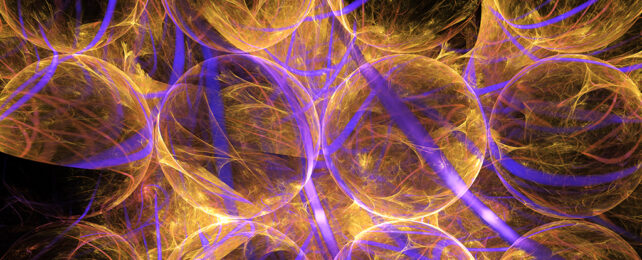Quantum traffic laws applied to the 3D streetscape of a specific kind of crystal can put the brakes on electron rush hour.
In a search for novel materials that can contain bizarre new states of matter, physicists from Rice University in the US led an experiment that forced free-roaming electrons to stay in place.
While the phenomenon has been seen in materials where electrons are constrained to just two dimensions, this is the first time it's been observed in a three-dimensional crystal metal lattice, known as a pyrochlore. The technique gives researchers a new tool for studying the less conventional activities of plucky, charge-carrying particles.
"We look for materials where there are potentially new states of matter or new exotic features that haven't been discovered," says Rice University physicist Ming Yi.
Just as light can be described in ways that are both wave-like and particle-like, so, too, can the building blocks of atoms.
The wave-like quantum behavior of electrons is essential for understanding how they coordinate their activity under certain conditions. Cooled right down, electron waves can join forces with one another in acts of entanglement that allow them to slip through solids like ghosts, giving rise to energy-efficient materials called superconductors.
Electron behavior can be managed in other ways. Arranging the right ratios of elements together results in unique intersections that act a little like traffic lights, reducing what might otherwise be a chaotic bustle of pedestrians and commuters to a gentle crawl in what's described as geometric frustration.
Pyrochlores are complex minerals with a formulaic structure that makes them useful for a range of research and industrial purposes. Constructing one from a mix of copper, vanadium, and sulfur gave researchers a geometrically frustrated metal that could channel electron waves into chokepoints.
"This quantum interference effect is analogous to waves rippling across the surface of a pond and meeting head-on," says Yi.
"The collision creates a standing wave that does not move. In the case of geometrically frustrated lattice materials, it's the electronic wave functions that destructively interfere."
A technique called angle-resolved photoemission spectroscopy allowed the team to measure the energy and momentum of the electrons in the 3D lattice, demonstrating that one did not depend on the other as usual.
In this unusual space known as a flat band, interactions between the idling electrons are governed by a different set of rules that could – in theory – give physicists a new way to understand electromagnetic phenomena like superconductivity.
While similarly localized electrons have been seen in 2D materials known as Kagome lattices, the emergence of a flat band from interfering waves coursing their way through a 3D lattice provide a proof-of-concept that could lead to a whole new class of material.
"The pyrochlore is not the only game in town," says Rice University physicist Qimiao Si.
"This is a new design principle that allows theorists to predictively identify materials in which flat bands arise due to strong electron correlations."
This research was published in Nature Physics.
